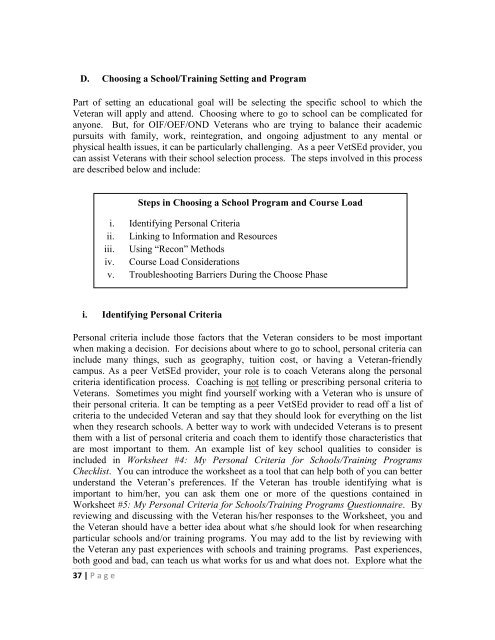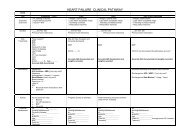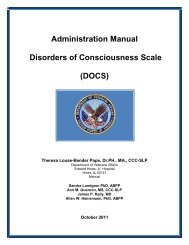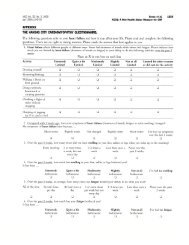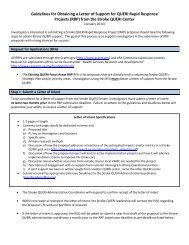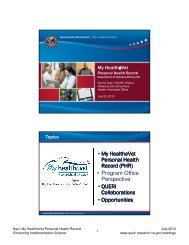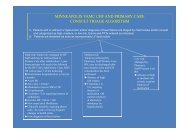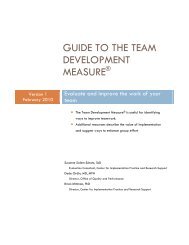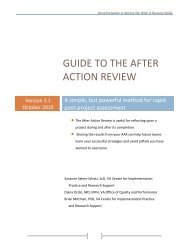The Veteran Supported Education Service Treatment Manual: VetSEd
The Veteran Supported Education Service Treatment Manual: VetSEd
The Veteran Supported Education Service Treatment Manual: VetSEd
You also want an ePaper? Increase the reach of your titles
YUMPU automatically turns print PDFs into web optimized ePapers that Google loves.
D. Choosing a School/Training Setting and Program<br />
Part of setting an educational goal will be selecting the specific school to which the<br />
<strong>Veteran</strong> will apply and attend. Choosing where to go to school can be complicated for<br />
anyone. But, for OIF/OEF/OND <strong>Veteran</strong>s who are trying to balance their academic<br />
pursuits with family, work, reintegration, and ongoing adjustment to any mental or<br />
physical health issues, it can be particularly challenging. As a peer <strong>VetSEd</strong> provider, you<br />
can assist <strong>Veteran</strong>s with their school selection process. <strong>The</strong> steps involved in this process<br />
are described below and include:<br />
Steps in Choosing a School Program and Course Load<br />
i. Identifying Personal Criteria<br />
ii. Linking to Information and Resources<br />
iii. Using ―Recon‖ Methods<br />
iv. Course Load Considerations<br />
v. Troubleshooting Barriers During the Choose Phase<br />
i. Identifying Personal Criteria<br />
Personal criteria include those factors that the <strong>Veteran</strong> considers to be most important<br />
when making a decision. For decisions about where to go to school, personal criteria can<br />
include many things, such as geography, tuition cost, or having a <strong>Veteran</strong>-friendly<br />
campus. As a peer <strong>VetSEd</strong> provider, your role is to coach <strong>Veteran</strong>s along the personal<br />
criteria identification process. Coaching is not telling or prescribing personal criteria to<br />
<strong>Veteran</strong>s. Sometimes you might find yourself working with a <strong>Veteran</strong> who is unsure of<br />
their personal criteria. It can be tempting as a peer <strong>VetSEd</strong> provider to read off a list of<br />
criteria to the undecided <strong>Veteran</strong> and say that they should look for everything on the list<br />
when they research schools. A better way to work with undecided <strong>Veteran</strong>s is to present<br />
them with a list of personal criteria and coach them to identify those characteristics that<br />
are most important to them. An example list of key school qualities to consider is<br />
included in Worksheet #4: My Personal Criteria for Schools/Training Programs<br />
Checklist. You can introduce the worksheet as a tool that can help both of you can better<br />
understand the <strong>Veteran</strong>‘s preferences. If the <strong>Veteran</strong> has trouble identifying what is<br />
important to him/her, you can ask them one or more of the questions contained in<br />
Worksheet #5: My Personal Criteria for Schools/Training Programs Questionnaire. By<br />
reviewing and discussing with the <strong>Veteran</strong> his/her responses to the Worksheet, you and<br />
the <strong>Veteran</strong> should have a better idea about what s/he should look for when researching<br />
particular schools and/or training programs. You may add to the list by reviewing with<br />
the <strong>Veteran</strong> any past experiences with schools and training programs. Past experiences,<br />
both good and bad, can teach us what works for us and what does not. Explore what the<br />
37 | P a g e


